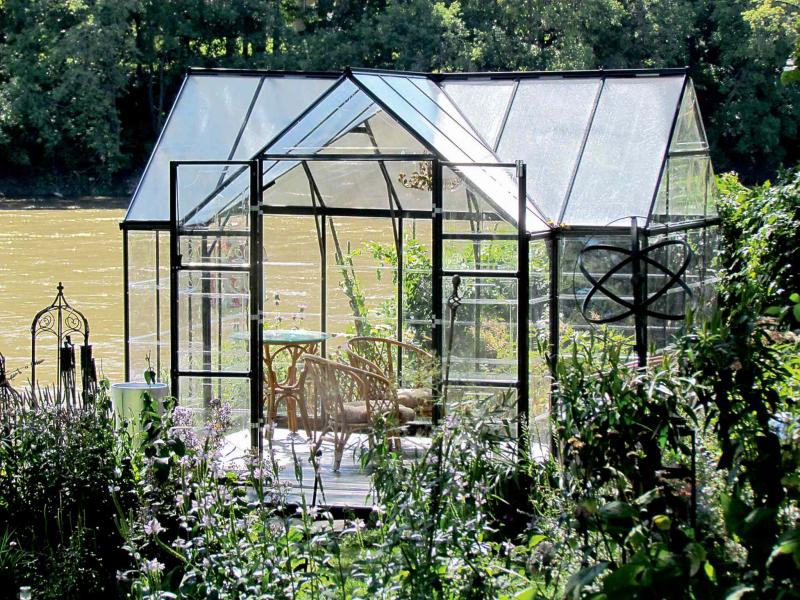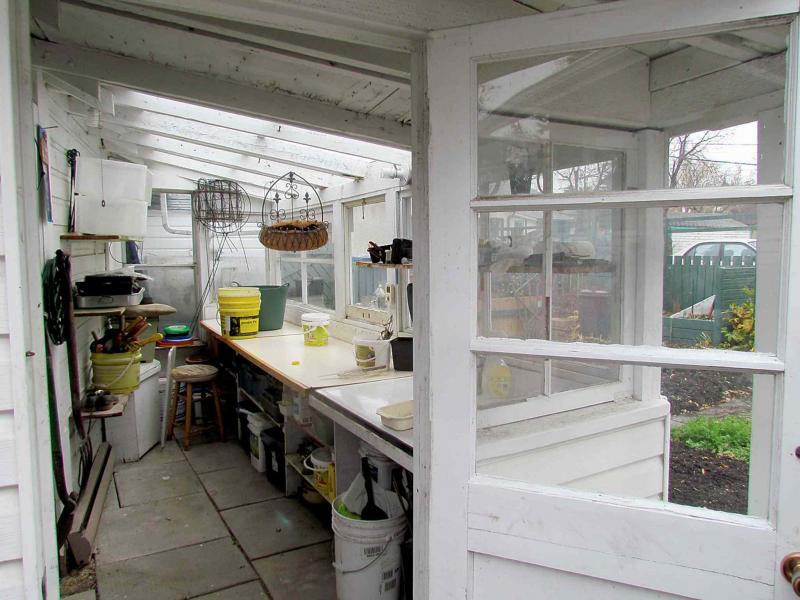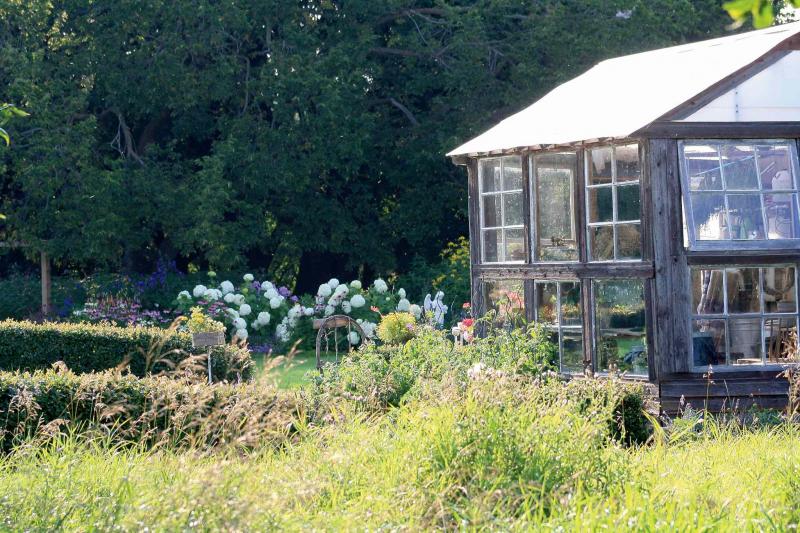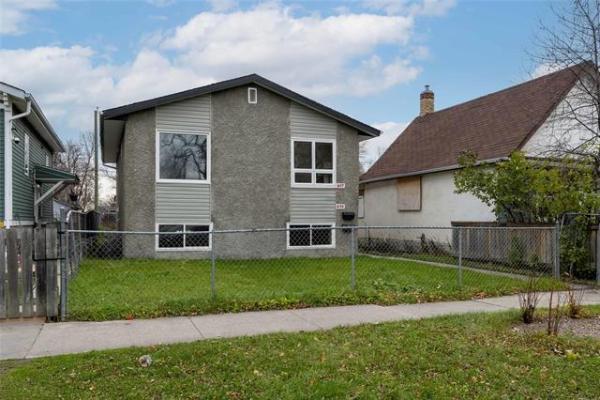

Winter, that cold interlude between the end of one growing season and the beginning of another, can be a productive time for gardeners. Some of the best ideas for backyard projects are started at the kitchen table, born out of a desire to improve the aesthetics of your bit of greenspace and a resolve to make better use of it.
What's needed more than anything at this time of year is patience as we wait through the long winter months to get back outside into the garden. The cold spring weather of the past few years meant a frustrating delay in planting and in some cases, the necessity to reseed.
What if you could plan a project that extended your growing season by several weeks?
When Bob Davis and his family relocated from Vancouver in 1977 to a farm in the Altona area, Manitoba's propensity for late frost in the spring and early frost in the fall soon convinced him of the advantages of a greenhouse.
At first Davis tried different types of materials for covering his greenhouse frame. Both six millimetre poly and six mm vinyl were not strong enough to endure our harsh climate, and in a short matter of time yellowed, shattered, shredded or disintegrated.
After experimenting with various types of plastic coverings, Davis was finally satisfied with a product called UV-stabilized Superstrong Woven Poly which demonstrated resistance to temperatures as cold as -40 C., withstood hail, high winds, heavy snow and ice, and didn't break down from the sun's UV rays.
Davis began selling various thicknesses of Superstrong Woven Poly in 1980 and today operates a successful business, Northern Greenhouse Sales, providing poly for commercial and homeowner use across the prairies and south of the border.
Available in large rolls, Davis recommends a thickness of 11 mm for greenhouses.
Before starting her business, Sweet Pea's Greenhouse, in Glenboro, Joyce Wilton made use of a small wooden frame greenhouse in her backyard where she started her bedding plants.
"When my children were young," said Wilton, "I could take them into the greenhouse when it was cold outside, give them some pots and a bit of soil and water to play with and do my own thing."
Her first greenhouse had glass windows, recycled from an old high school that was torn down. The occasional breakage and replacement encouraged her to switch to the poly sold by Davis. For the roof, Wilton used clear, corrugated polycarbonate sheets.
Wilton used her backyard greenhouse to start up geraniums in early spring but also as temporary storage for new plant purchases. A small electric heater was all that was needed to provide heat on cold nights.
Even in early April when snow is still on the ground, the inside of a greenhouse can heat up very quickly. Wilton made a point of checking the greenhouse regularly to monitor the temperature, which can soar to as high as 30 Celsius or more under a springtime sun.
Lenore and Bill Linton also purchased Bob Davis's greenhouse plastic and used it for the roof of their greenhouse-cum-potting shed. Built in 1998, the potting shed is about 3.6 metres in length. The garage sits at an angle on the property so the potting shed is 1.8 metres at the wide end and narrows to 1.2 metres. The poly roof lasted for 15 years until it was replaced in 2013 with sheets of corrugated polycarbonate.
A bank of recycled storm windows face west and south and a north-facing door, all from Habitat for Humanity's ReStore on Archibald Street, provide a light-filled interior. The windows are on hinges and can be opened to allow in cool air as needed.
Lenore basks in the warmth of her potting shed in early April even while the snow outside is still 60 centimetres deep or more. By May, early plant purchases can be potted up into containers and moved outdoors as temperatures climb, then back inside as temperatures dip.
It is in the fall, though, that Lenore really appreciates her potting shed. "It makes it possible to still harvest my vegetable garden, even when an early frost threatens," said Lenore. Peppers, for example, are grown in pots so if fall temperatures dip unexpectedly, they can easily be moved into the potting shed to ripen.
The Linton's also have a cold frame nestled against the outside south wall of their 100 year old house and protected on one side by a small porch. The lid of the cold frame is made from the same corrugated material as the roof of the potting shed. Instead of using the backing strip some of the acrylic sheets are sold with, Bill uses a low pressure type of spray foam that fills and insulates without warping the frame.
The coldframe, lined with Styrofoam insulation, is built in front of a basement window on which Bill has mounted an old car heater. A thermometer is installed inside the cold frame and when the heater is operational during cold spells, a thermostat maintains the temperature inside at 20 Celcius in the early spring or late fall.
In early spring the sun alone can cause the temperature inside a cold frame to soar as high as 30 or 35 Celsius. Last year, with snow that lingered until May, the cold frame was the warmest spot outdoors.
The Linton's love heritage varieties of tomatoes and grow them for a plentiful supply. Lenore starts the seeds, usually by April 6, in her dining room. Once germinated, Linton moves the tomato seedlings downstairs into the cool environment of her basement and places them under grow lights. When the true leaves appear and the plants have been transplanted into pots, Linton is ready to move them into the cold frame.
The Linton's check the thermometer sometimes twice a day to make the sure the interior of the cold frame isn't too warm for the plants. Opening the lid slightly allows some of the warm air to escape and encourages the tomatoes to adapt to cooler temperatures. Checking soil moisture levels is equally important, too, so seedlings do not dry out.
Not everyone has the skills or tools to build their own greenhouse or cold frame. Ready-made options are easily available, either locally or through mail order. Vesey's Seeds, located in Prince Edward Island, offers easy-to-assemble greenhouses in various sizes with rust resistant aluminum frames and polycarbonate panels as well as automatic vent controls for stabilizing the temperature.
Lee Valley Tools carries cold frames crafted from eastern white cedar. An adjustable, heat-activated venting mechanism is optional.
Tim Evans, a St. James gardener, purchased an orangery-style greenhouse online this summer from Costco. With a design reminiscent of the classic glasshouse conservatories popular in 17th century Europe, Evans' Victory orangery garden chalet greenhouse is perched beneath a mature elm tree at the edge of his 92 metre property overlooking the Assiniboine River.
Beginning with the removal of a perennial bed, Evans built a level wooden base on which to erect the 269 cm tall greenhouse. While the traditional orangery featured glass panels, this modern version with its black-trimmed cathedral design and double doors has twin-wall polycarbonate panels.
With ample room and a luxurious appearance, the orangery can double as an outdoor living room. Two manual roof vents help to moderate temperature. Evans has wired the greenhouse for heat and suspended an elegant, vintage chandelier from its high ceiling, perfect for cool evenings.
The greenhouse, though, will have a more practical use, too. Instead of storing springtime plant purchases in a spare bedroom, Evans can now keep them in his greenhouse until the weather warms up.
One project of course begets another. Curved beds have been created around one side of the greenhouse and there are plans for a pathway that leads from the pyramid-style deck adjoining the house.
Evans also purchased a small Edwardian style greenhouse with glass panes that have yet to be installed. On a visit this summer the rusty steel frame looked quaint beneath the shade of a maple tree, Jerusalem artichokes and verbena bonariensis weaving their way through the windowless frames.
Choose the size and style of greenhouse or cold frame that is right for you. Assess whether the light levels will be adequate and if possible, provide a sheltered site with some wind protection.
colleenizacharias@gmail.com




